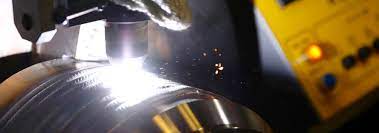Outline of Weld Overlay
Weld Overlay (WOL), otherwise called PTA Over Tile cladding, hardfacing, weld cladding, or weld overlay cladding, is an interaction where at least one metals are consolidated by means of welding to the outer layer of a base metal as a layer. This is regularly done to work on the material by adding either a consumption safe or hardfacing layer to it. Surfaces ready in this manner can even be exceptionally modified by layering and alloying various materials together. There exist a few distinct techniques for weld overlay, each with their own exceptional applications and employments. Settling on a particular PTA Over Tile method is dependant on the entrance, welding position, composite sort, and disintegration pace of the part alongside one's own monetary circumstance. The primary strategies for weld overlay are: protected metal circular segment welding, CO2 welding, Metal Inert Gas (MIG) welding/Tungsten Inert Gas (TIG) welding, Submerged curve welding, and Plasma Transferred ...
